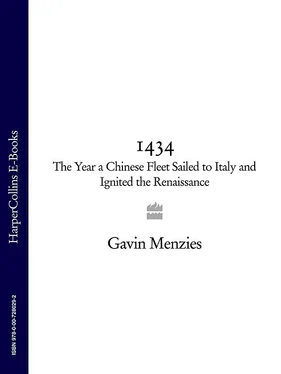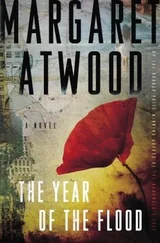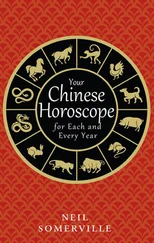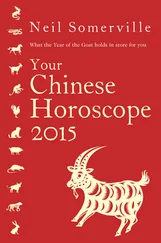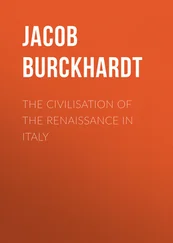In sum, the scale of Zheng He’s voyages would have required many in de pen dent fleets to be simultaneously at sea. Some fleets were no doubt carried off by storms to unexpected destinations. Others, as evidence I’ll present in chapter 22 suggests, were surely wrecked, sometimes in the most spectacular fashion. In any case, it should come as no surprise that many, perhaps even a majority, of destinations reached by the fleets were never recorded in official Chinese records. Seafaring in the fifteenth century was an even more hazardous profession than it is today. Many ships never returned home to tell their tales. The loss of life was terrible, as was the economic and intellectual devastation of the wreckage around the world.
This voyage, from which few junks returned, was the most ambitious of them all. Zheng He’s fleets were sent to every country in the known world. Consequently the preparations would have been awesome, as I can vouch from my experience in 1969 on the staff of Admiral Griffin’s Far East Fleet.
Zheng He’s fleet was multinational and multifaith, as was the British fleet in 1969. Our ships had Ethiopian, Ira nian, Indian and Pakistani officers, Maltese stewards, Goanese engine-room stokers, Chinese laundrymen, Tamil engineers, Christians, Muslims, Taoists, Hindus, Confucians, Zoroastrians, Buddhists, and Jews. The British Admiralty took great pains to ensure that captains would know of the religion, history, culture, background, and customs of all the crew as well as of the countries the fleet would visit. In the same way the Xuan De emperor and his predecessor, Zhu Di, would also have briefed Zheng He in great detail. They had the ideal tool with which to do so—the Yongle Dadian . 16This massive encyclopedia was completed in 1421 and housed in the newly built Forbidden City. Three thousand scholars had worked for years compiling all Chinese knowledge from the previous two thousand years, in 22,937 passages extracted from more than 7,000 titles, a work of 50 million characters. The encyclopedia was of a scale and scope unparalleled in history and to my mind Zhu Di’s monumental legacy to humankind. It was contained in 11,095 books, each 16 inches high and 10 inches wide, requiring 600 yards of shelf space, 5 rows high or one third of one deck of his flagship. The encyclopedia covered every subject on the planet: geography and cartography, agriculture, civil and military engineering, warfare, health and medical care, building and town planning, steel and steel production, ceramics firing and painting, biochemistry including cross-fertilization, alcohol production, silk making and weaving, gunpowder making, ship construction, even codes, cyphers, and cryptography. We know this from the contents pages, of which there are copies in the National Libraries in Beijing and Taipei, the British Library in London, the Bibliothèque Nationale in Paris, and the Asian Libraries of Oxford and Cambridge Universities.
Fortunately, one part of the Yongle Dadian remains more or less whole at Cambridge University, where it has escaped the ravages of the Boxer uprising and more recently the lunacy of Mao’s Red Guards, who burned any intellectual book they could lay their hands on. The Cambridge book is about mathematics. Joseph Needham describes the truly amazing depth of Chinese mathematical knowledge shown in this book, which contains knowledge from the year A.D. 263 onward. 17
There are chapters giving practical advice on using trigonometry to determine heights of buildings, hills, trees, and towns on cliffs, and the circumference of walled cities, the depth of ravines, and the breadth of river estuaries.
No fewer than ninety-five mathematical treatises of the Song dynasty are mentioned, some on such specialized subjects as the Chinese remainder theorum and cryptoanalysis—the use of mathematics to break codes. There are mathematical methods for calculating the area and volume of circles, spheres, cones, pyramids, cubes, and cylinders and for determining magic numbers and constructing magic squares, and the principles of square-root extraction and negative numbers. It was lucky Zheng He had a prodigious memory—he could recite the entire Koran by heart in Arabic at the age of eleven.
As Needham points out, the discoveries made on the voyages of Zheng He’s fleet were incorporated into the Yongle Dadian . One can go further and say that one of Zhu Di’s leading objectives was to acquire knowledge gained from the barbarians. This is epitomized in the instructions given to the three previous eunuchs, Zheng He, Jang Min, and Li Qi in 1403—to be described in the next chapter. 18
The best way to acquire knowledge, Zhu Di knew, would be to share it—to show the barbarians how im mensely deep, wide, and old was Chinese knowledge and Chinese civilization. Zheng He and his captains were thus key players in compiling the knowledge contained in the Yongle Dadian . For this of course they needed to have copies of the encyclopedia aboard their junks, and they needed also to brief interpreters about the contents so the message could be propagated. Zhu Di made enormous strides in improving Chinese printing methods, which enabled parts of the Yongle Dadian to be reproduced. 19
Even “Pascal’s” triangle was included in the Yongle Dadian —centuries before Pascal. The Chinese have always been practical. Mathematics was applied to surveying and cartography. By the Eastern Han dynasty (A.D. 25–A.D. 220), Chinese surveyors were using compass and squares, plumb lines and water levels. By the third century they were using the trigonometry of right-angle triangles, by the fourteenth century the Jacob’s staff to mea sure heights and distances.
Ch’in Chiu-shao in his book Shu-Shu Chiu-Chang of 1247 20(included in the Yongle Dadian ) used knowledge of Chinese mathematics and Chinese surveying instruments to calculate the areas of rice fields, the volume of water required to flood those fields, and hence the size and flow rate of dykes that would be required. He gave different methods of building canals and the strength of lock gates that would be needed.
One could carry out a similar exercise for military machines available to Zheng He and how these had been developed over the centuries. The Yongle Dadian included details on how to build mortars, bazookas, cannons, rocket-propelled missiles, flamethrowers, and all manner of gunpowder bombs. This vast encyclopedia was a massive collective endeavor to bring together in one place Chinese knowledge gained in every field over thousands of years. Zheng He had the immense good fortune to set sail with priceless intellectual knowledge in every sphere of human activity. He commanded a magnificent fleet—magnificent not only in military and naval capabilities but in its cargo—intellectual goods of great value and sophistication. The fleet was the repository of half the world’s knowledge.
He also had well-educated officers who through interpreters could speak to the leaders of foreign countries in seventeen different languages including Arabic, Persian, Hindi, Tamil, Swahili, and Latin. 21Zheng He’s fleet resembled a floating university and probably had more intellectual knowledge in its library than any university in the world at that time.
1& 2. A medallion has been found in North Carolina issued by the Xuan De emperor to his representative. For the arguments put forward about the authenticity of the brass medallion and refutations by Dr. S. L. Lee, refer to Dr. Lee’s website Asiawind (see below). I am convinced that the medallion issued by Zhu Zhanji found in North Carolina and now owned by Dr. Lee is genuine for the multiplicity of reasons given by Dr. Lee. Research of Dr. S. L. Lee. See 1421 website, (www.1421. tv), and Asiawind, (http://www.asiawind.com/zhenghe/).
Читать дальше
